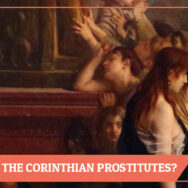Sources, Sources…What are your Sources?


Our Bible is a historical book. It was written thousands of years ago, by many different people who lived in many different regions. Since there are thousands of years that separate us from the Biblical events, Christians will always have a need to understand the past. Though it can be abused, understanding historical settings, cultures and geography can be immensely helpful to us in understanding our Bibles.
When a historical claim is made, biblical commentators usually add a footnote to alert the reader to where they found that information. After all, the commentator didn’t live in Biblical times so the ONLY way they can know about a past time or culture is if they have a historical source (written or archaeological). Sources help us determine what is true about the past and they help us to reject mere speculation and conjecture.
Whenever you hear a claim made about the past, your immediate thought should be, “what are the sources?” This is important because myths can become assumed facts very quickly and even smart and careful theologians can be guilty of perpetuating them. One such myth is that the only women in Paul’s day who didn’t have long hair and a head covering were prostitutes. This information is then usually presented as the key to interpreting 1 Corinthians 11, where it is seen as a local issue about not appearing like a prostitute.
“… in the Corinth of [Paul’s] day the only women who appeared in public without some kind of headcovering were
prostitutes.”
— Ellen Mandeville (@EllenMandeville) March 3, 2014
With regards to this claim, there are many smart theologians with Ph.Ds who state it is a fact. There are others just as smart who also have Ph.D’s who reject it as a myth. How do we know who is right and what is true? Well, since neither theologian was present in 1st century Corinth, both must rely upon historical sources. So all we need to do is see where they are getting their information from. Follow me and let’s use the origin of the “Corinthian prostitute” theory as a case study.
The earliest reference 1) We can not definitively say that this is where the theory started but it is the earliest we were able to trace it back. to this theory comes from Thomas Charles Edwards in 1885. He wrote:
“The woman that unveils her face in public worship shames herself, inasmuch as she declines, to her shame, to wear the badge of her subjection in Church order to the man. Among the Greeks the hetaera 2) Courtesans / upper-class prostitutes – This definition is not part of Edwards commentary but was added by the author of this article only went unveiled.” 3) Thomas Charles Edwards – A Commentary on the First Epistle to the Corinthians (Hamilton, Adams, and Co., 1885) Pg 274
What evidence does Edwards list to show that “hetaera only went unveiled”? None. It’s asserted as a fact but he doesn’t give any sources whatsoever to show us that this historical claim is true.
This was repeated in 1900 by G.G. Findlay in “The Expositor’s Greek Testament”. He wrote:
“Amongst Greeks only the hetaera, 4) Courtesans / upper-class prostitutes – This definition is not part of Findlay’s commentary but was added by the author of this article so numerous in Corinth, went about unveiled…” 5) Nicol, W. Robertson, M.A., L.L.D. ‘Commentary on 1 Corinthians 11:1’. The Expositor’s Greek Testament. http://www.studylight.org/com/egt/view.cgi?bk=45&ch=11. 1897-1910.
How about Findlay? What evidence does he provide that prostitutes “went about unveiled” or that they were “so numerous in Corinth”? Just like Edwards before him, he provides no sources to justify his claims.
A.T. Robertson then repeats Findlay’s claim in 1933 in his very popular “Word Pictures in the New Testament“. Robertson doesn’t add any sources to authenticate the claim, he just quotes Findlay as the authority. The problem though, as we just saw, is that Findlay doesn’t have a source either.
This type of careless commentating was pointed out by Michael Marlow who said:
Many of the statements regarding Greek customs found in otherwise respectable commentaries reveal a surprising level of carelessness in the use of cultural background information. Unsupported speculations are often asserted as fact, and then repeated by other scholars. For example, G.G. Findlay, writing in The Expositor’s Greek Testament (1900) states that “Amongst Greeks only the hetaerae [high-class prostitutes], so numerous in Corinth, went about unveiled” (vol. II, p. 872), but he gives no historical source for this assertion. This statement is quoted by A.T. Robertson in his Word Pictures in the New Testament (1933) without any indication of its being questionable (vol. IV, pp. 159-160), and from there it is quoted in several more recent books. 6) Michael Marlowe – Headcovering Customs of the Ancient World www.bible-researcher.com/headcoverings3.html
Dr. Gordon Fee, a respected Egalitarian theologian, also keenly observes:
“It is commonly suggested that short hair or a shaved head was the mark of the Corinthian prostitutes (cf., e.g., Grosheide, 254). But there is no contemporary evidence to support this view (it seems to be a case of one scholar’s guess becoming a second scholar’s footnote and a third scholar’s assumption).” 7) Gordon Fee – The First Epistle to the Corinthians (Eerdmans, 1988) Pg. 511. Footnote #80
This is a big problem. Thousands of Christians are dismissive of 1 Corinthians 11 because of a historical theory that has absolutely no basis. Our hope is that this myth will be laid to rest and will no longer be perpetuated by preachers and scholars.
If everyone took a critical look at historical claims and just asked “what are the sources?” we can help separate fact from fiction, truth from conjecture and have a more accurate understanding of the past. And when we do that, we’ll make less mistakes in interpreting our Bibles.
References
- The Head Covering Movement’s New Direction: A Call for Team Members - July 11, 2025
- Is Head Covering Related to Spiritual Gifts? A Response to Barry York - July 5, 2023
- A Husband’s Authority is Limited (He is Not Pastor or King) - November 14, 2022



